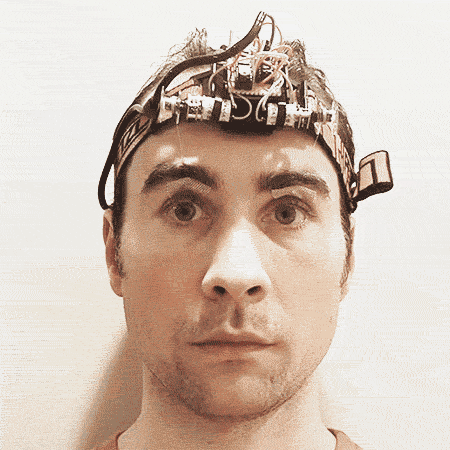Here’s how to build a set of remote control eyebrows from an old headlamp and a small handful of parts. Two small motors mounted to the headlamp will be attached by thread to your eyebrows for a natural look.
Beyond its obvious practicality, this project makes a great introduction to DC motor control, infrared remote control, and moving from working with an Arduino to working with the bare ATMega328 chip. These concepts are combined with some minimal extra circuitry.
The end result will be a great conversation piece, that is… if you don’t stab your eye with a toothpick. My implementation supports calibration, independent control of each eyebrow, and a 1- to 9-way waggle feature. Expressions vary from skeptical to shocked to very, very shocked.
Because you’ll probably be working with a different remote control than mine, you’ll need to experiment with decoding the buttons and assigning them to functions. Reverse-engineering household junk is a satisfying way to save money and reduce e-waste. You’ll need to be familiar with Arduino-style C code to adapt the supplied source code to suit your own remote control.



